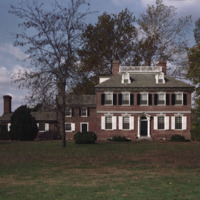William Corbit House
Item
- Type
- Title
- Rationale
- Description
- Date
- Place
- Subject
- Extent
- Medium
- Provenance
- Identifier
- Rights
- References
- Contributor
-
Building -- Residence
-
William Corbit House
-
As an enslaver's house during the colonial era but later a part of the Civil War-era Underground Railroad operation, this structure exemplifies how the relationship of a building to a community of color can vary over time.
-
The exterior of the William Corbit House in Odessa, Delaware. Corbit was a wealthy Quaker merchant who defied his congregation's ban on slaveowning. He had the house built just before the American Revolution. In a rare documented case in 1845, William's son Daniel Corbit and his wife Mary gave refuge to a fugitive enslaved man named Sam. For this reason, the Corbits were in regular communication with abolitionist leaders in Delaware and Pennsylvania. designated as part of the Harriet Tubman Underground Railroad Byway and the National Underground Railroad Network to Freedom of the National Park Service.
-
1772-1774
-
1770s
-
Odessa, Delaware
-
Odessa, Delaware
William Corbit House
Underground Railroad
American Colonial Architecture
-
Physical dimensions: Undetermined, please contact the publisher for more information.
-
Digital dimensions: 799.984 x 614px
-
Wood, brick, metal, glass, etc.
-
For more detailed information, please contact the publisher.
-
This house remained in the Corbit family until 1938, when H. Rodney Sharp acquired it and restored it.
-
This Item is protected by copyright and/or related rights. You may find additional information about the copyright status of the Item on the website of the organization that has made the Item available.
-
John A.H. Sweeney, Grandeur on the Appoquinimink: The House of William Corbit at Odessa, Delaware (University of Delaware Press, 1989).
-
The Carnegie Arts of the United States Collection
- Item sets
